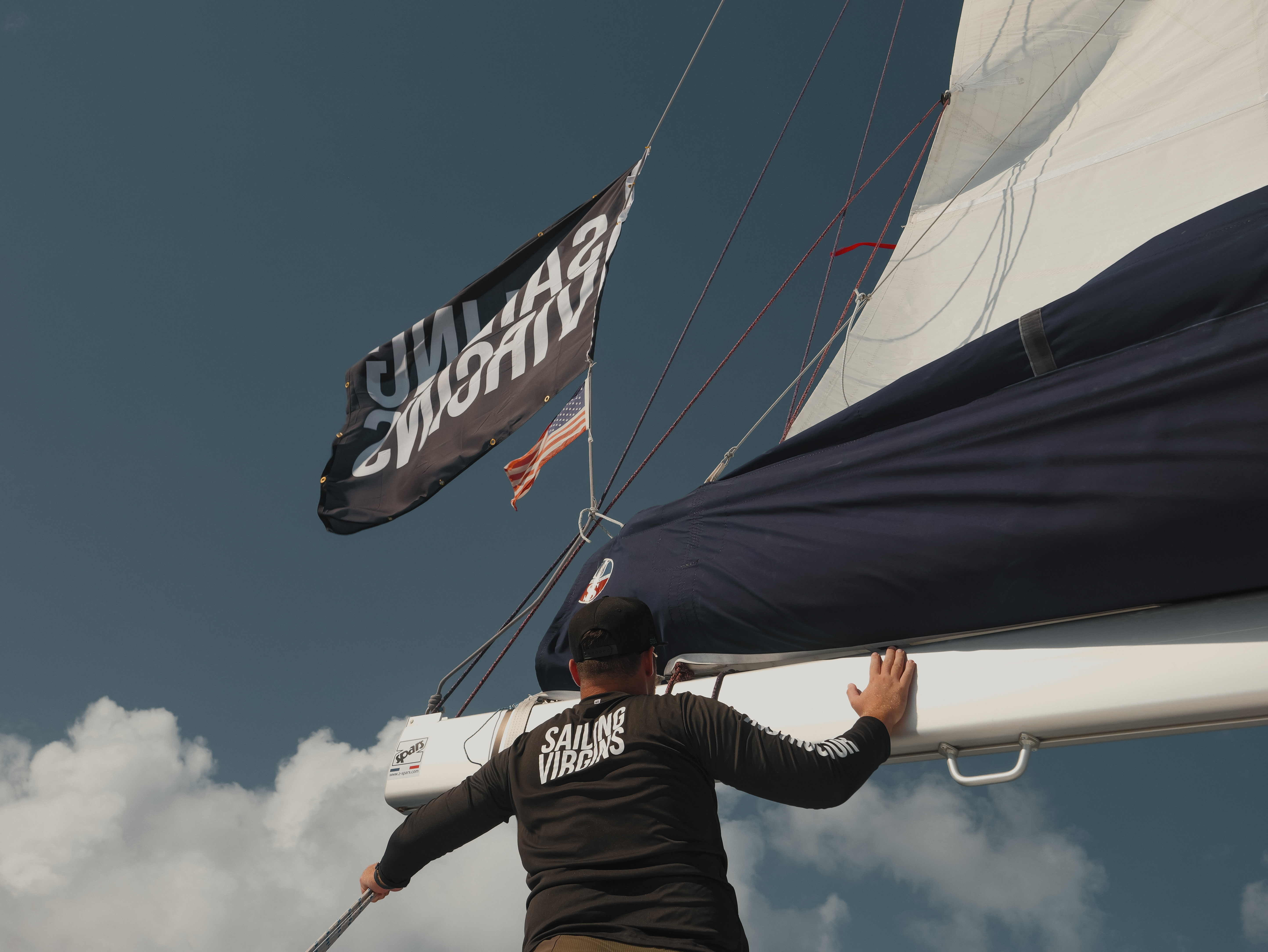Posted on November 3, 2025 by Chris Sebastian
Running Rigging Essentials: Halyards, Sheets & Outhauls Demystified
If you're learning to sail, all those lines can feel like a mystery. But each one has a purpose, and it’s easier to learn than you might think.
Running rigging includes the lines that raise, adjust, and shape your sails. When you know how to handle them, everything on board starts to make more sense.
In this guide, we’ll walk through the three most useful lines for sail control. You’ll learn how halyards, sheets, and outhauls work together to help your boat perform in changing conditions.
What Is Running Rigging?
Running rigging includes the lines you adjust while sailing. These lines raise sails, change shape, and control trim.
They differ from standing rigging, which stays fixed and supports the mast.
Each line in the running rigging system has a purpose:
- Halyards raise sails like the mainsail, jib, or spinnaker
- Sheets control the sail's angle to the wind
- Outhauls adjust the foot of the mainsail for sail shape
- Reefing lines reduce sail area when the wind increases
Most modern lines are made from low-stretch materials like Dyneema, nylon or polyester. These hold tension under load and help keep the sail shape consistent as wind shifts.

Use Halyards to Raise and Shape the Sails
A halyard lifts the sail up the mast. Each sail uses its own halyard. The line passes through a block at the masthead and secures to a cleat or winch.
The most common halyards include:
- Main halyard for the mainsail
- Jib halyard for the jib or genoa
- Spinnaker halyard for the spinnaker
Tension affects how the sail performs. A tight halyard flattens the luff and reduces draft in strong wind. Easing it moves the draft aft and increases the curve in lighter wind.
Check halyards for chafe, especially near sheaves and blocks. Use a low-stretch line that resists wear and holds its shape under load.
Trim Sails with Sheets for Balance and Speed
Once the sail is up, use the sheet to control its angle to the wind.
Each sail uses one or more sheets:
- The mainsheet controls the mainsail
- Jib sheets control the jib or genoa
Pull the sheet in to move the sail toward the center of the boat. Ease it out to open the sail and increase power.
These small adjustments help with balance and speed. Ease the sheet during gusts to reduce heel. Trim tighter when sailing upwind to improve pointing and hold your course.
The mainsheet also controls twist, which affects how open the top of the mainsail remains in shifting wind.
Most sheets run through blocks that reduce load and improve control. Choose Dyneema or polyester braid for durability and low stretch. Inspect often for abrasion, especially near cleats and hardware.
Adjust the Sail’s Foot with the Outhaul
The outhaul controls the lower section of the mainsail. It pulls the clew toward the boom’s end and adjusts the foot of the sail.
Pull the outhaul tight to flatten the sail’s foot in stronger wind. This reduces drag and helps keep the boat stable. Ease the outhaul to create a rounder shape that adds power in lighter conditions.
Use the outhaul with the halyard for better control. One adjusts the top, the other the bottom.
Inspect this line often. Check for chafe near the boom. Use low-stretch materials that maintain tension under load.

How These Lines Work Together on the Water
A balanced sail needs more than one line. You’ll get the best result when you adjust the halyard, sheet, and outhaul together.
- Raise the sail with the halyard. Hoist it to the masthead. Use more tension in strong winds. Ease in lighter wind.
- Trim the sheet to set the sail’s angle. Pull it in to reduce the twist. Ease it to catch more wind.
- Adjust the outhaul to shape the foot. Pull tight to flatten. Ease it for extra curves and drive.
Each line helps the sail respond to the wind. When they work together, you get more control, better speed, and a more stable feel.
It takes practice to feel what each change does. But once you start using these lines in sync, sail trim becomes much more natural.
Practice Rigging Skills on the Water With Sailing Virgins
Reading about running rigging essentials can help. But nothing beats raising a sail, adjusting trim, and feeling the boat respond beneath your feet.
Sailing Virgins offers liveaboard courses in some of the world’s most beautiful locations.
Choose from two levels:
- Beginner Course (ASA 101 and 103): Learn how to raise sails, trim for wind, and manage basic line handling. Train on a catamaran or monohull with plenty of time on deck.
- Intermediate Course (ASA 104 and 114): Build skippering skills, reef in stronger wind, and fine-tune sails as conditions shift.
Every course gives you hands-on practice. By the end of the week, you’ll know how to hoist, trim, and fine-tune sails using the lines covered in this guide.
Ready to try it yourself? Contact Sailing Virgins and start your training!